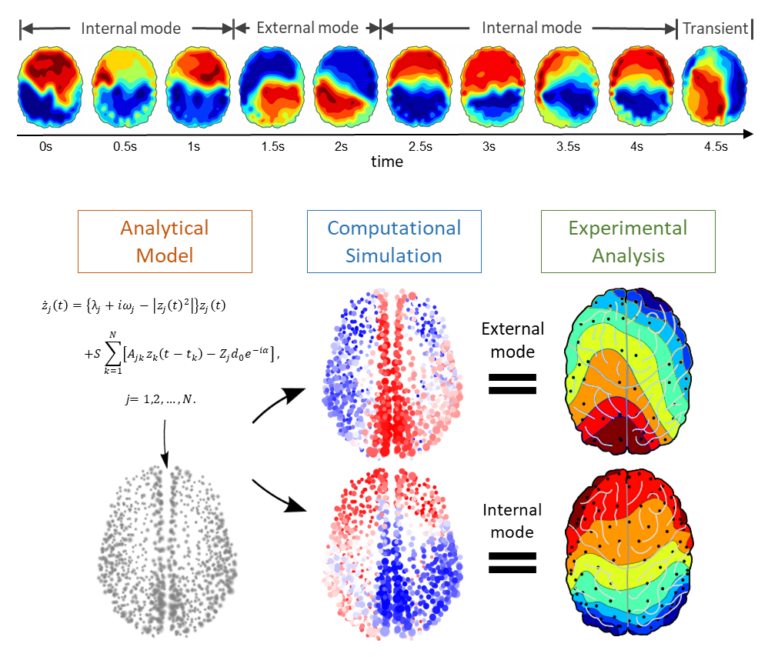Research on Brain States and Transitions
The human brain is one of nature’s most complex systems, and studying the brain facilitates the development of new theoretical approaches that can be applied in fields beyond neuroscience. We are particularly interested in the dynamics and state transitions of the human brain, and we study this system in the framework of nonlinear dynamical systems. Our research is motivated by the idea that understanding the dynamics of information flow in the brain will be critical for identifying, monitoring, and ultimately controlling brain states transitions. Our work combines analytical modeling and numerical simulations with multi-modal recordings of neural dynamics (EEG, ECoG, fMRI) during real-world cognitive function.
Conscious vs. Unconscious States
For example, possibly two states which are most different from each other is conscious and unconscious states. When we are conscious we can hear, understand and have thoughts; when we’re unconscious, we cannot; now, the underlying brain anatomy is the same across those two states, but the dynamics are very different. So, there must be some foam of a functional state change happening, and understanding such changes in state is the key motivation of our research. We want to know how these changes arise, how they are controlled in the brain, and how we can influence them.
Our experiments and models have shown that there exists a robust yet very dynamic information flow pattern during the conscious state, whereas the pattern becomes very random during the unconscious state. Now, what do these patterns mean and what does the difference of the patterns between states mean?
Internal vs. External Modes
Our brain states reflect distinct patterns of information flow from moment to moment. Our models (e.g., coupled oscillator systems) and simulations predict mixtures of externally biased mode where we are more focused on external world (dominant bottom-up flow: information flowing from sensory to higher order areas), and internally biased mode where we are internalizing the information from the world (dominant top-down flow: information flowing from higher order to sensory areas). The predictions match the pattern changes observed in the experimental data.

In addition to extending our previous research, we ask: i) By switching between internal and external modes, how does the brain facilitate to perceive, memorize and learn the information from the world? ii) With experiments involving various stimuli, how can we stimulate and control brain mode transitions? Ultimately, we aim to provide general principles of the information flow dynamics and state transitions of the brain.